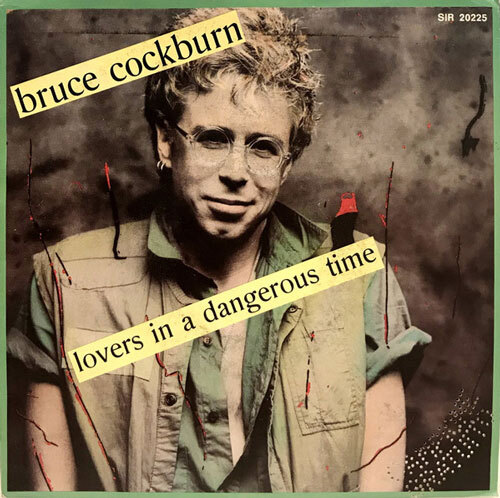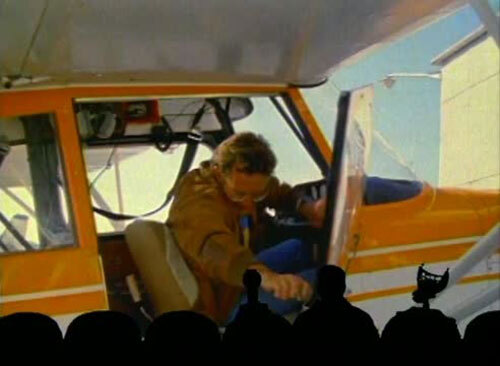Today in Tedium: I had something else planned for this issue that didn’t have anything to do with coronavirus or our rising collective nerves. And that generally has been my plan for Tedium in recent weeks—to avoid talking about the obvious, which I’m sure you’re hearing about everywhere else. But I’ve been feeling out of sorts over the past day, ever since finding out about the passing of Adam Schlesinger to this wretched disease. Schlesinger did not write music for sad moments, mostly—or if they were sad, he could put a cheerful coat on top. The Fountains of Wayne bassist came from the irony-drenched ’90s, but he was above them even as he added to their oeuvre. For example, “Sink to the Bottom,” one of his many great compositions, may be the most upbeat song ever written about depression. Even with his loss, I know that Adam’s songs will make me feel better—because they did when he was still with us. Pop culture is all we have right now to keep us sane, so I want to spend tonight’s issue honoring the pop culture that has kept me sane over the past few weeks. Nothing more, nothing less. I hope it helps. — Ernie @ Tedium
Want a scholarship to learn a thing or two about data science? Check out today’s sponsor below. ⤵️
Get a $500 Scholarship to Become a Data Scientist We partnered with Springboard to offer you a $500 scholarship for their online Data Science program. You're guaranteed a job in data science, or your money back.
Only 20 scholarships available. Use DSSPRINGBOARD when enrolling. Applying is free.

(via Discogs)
Why Bruce Cockburn’s “Lovers in a Dangerous Time” is the perfect song for this specific moment
Bruce Cockburn is a Canadian folksinger whose body of work has in many ways defined the Canadian psyche. Like fellow countrymen Leonard Cohen and Gord Downie, his body of work has always built towards something bigger and more important.
Cockburn, whose last name is pronounced the same way as James Coburn’s last name is pronounced, has been politically aware and progressively minded throughout his career. (And in case you’re wondering, he’s taking steps to protect himself from COVID-19.)
One of his two charting singles in the U.S. was titled “If I Had a Rocket Launcher,” a 1984 song inspired by a trip to Guatemalan refugee camps in Mexico. Cockburn was angry, and he was angry because he was sad.
Near the end of the song he pledged death to his proposed target via the rocket launcher in terms a little strong for this newsletter to print. As a 1984 article in the Vancouver newspaper The Province made clear, the key word in the title of “If I Had a Rocket Launcher” was “If.” As in, his anger over the situation has its limits.
“We’re all used to getting angry at things and there are certain levels of anger that you permit yourself,” Cockburn told the paper. “Unless you’re psycho there are also brakes—moral or social—that will stop your rage from going any further.”
Perhaps reflecting this, the single he released immediately after that song took a somewhat softer tack to the same issue. “Lovers in a Dangerous Time,” represents the brakes to the rage of “Rocket Launcher.” It’s about the person you go home to during wartime. And that has given it a sense of timelessness. It’s very ’80s in its production, and has its own tense feelings driving it, but it’s ultimately about survival, and how moments of grace and tenderness emerge even amid the bomb-throwing.
“One day you’re waiting for the sky to fall,” one verse starts, ”The next you’re dazzled by the beauty of it all.”
I personally was made aware of the existence of this classic tune more than two decades ago as a result of the Barenaked Ladies cover of it, which removes the synthesizers and sticks with more acoustic instruments. It was their first charting hit in Canada. Both versions are worth your time.
In a time when people are losing their jobs, their ways of life, and the things that held their communities together, this feels like a song that the world needs to hear.
Few songs have been written that so perfectly nail the global mood. It’s not about the virus, of course. But it is about the need to find moments of joy during periods of gloom.
“Nothing worth having comes without some kind of fight,” Cockburn sings. “Got to kick at the darkness ’til it bleeds daylight.”
Here I am, kicking at the darkness. Hope you’re doing the same.
Five extremely unusual YouTube videos that have nothing to do with coronavirus whatsoever
1. Cooking Wagyu beef on an exposed CPU. This clip, which I found about a month ago, remains one of the most endlessly strange things that I’ve come across in my many years of using the internet, but at the same time, it makes absolute sense. Because, honestly, think about it. CPUs are famously known to reach temperatures as high as 100° Celsius (212° Fahrenheit), which is roughly the same temperature you might heat a slow-and-low BBQ dish. Do I think you should do this? No, because thermal paste is gross. But should you watch this? Of course.
2. Kermit the Frog, performing “Once in a Lifetime.” Same as it ever was. Recently, David Byrne has had a bit of a cultural renaissance thanks in part to a well-regarded Broadway show and Saturday Night Live appearance. Byrne is a cultural treasure and The Muppets, of course, were early to this trend, with Kermit the Frog doing a riff on “Once in a Lifetime” in a 1996 episode of Muppets Tonight. What happened was that Giganticus, a performance artist, was to appear on the show-within-a-show, but never showed up. That left a giant suit around for Kermit the Frog to pull off his best Byrne impression. The world is better for it.
3. The guy who makes synths out of old junk. One of my favorite recent finds on YouTube has been the music tech enthusiast LOOK MUM NO COMPUTER, a British vintage synth head (birth name Sam Battle) who has gained a following by turning circuit-bending into something of an art form. (He also makes music of his own, of course.) Eschewing modern computer equipment, his approach has built him a sizable fanbase over the past year or two. One of my recent favorites from Battle is this clip of him turning a Mega Drive into a giant synthesizer by making its sound chips into a machine of sorts. He is immensely talented and worth watching.
4. A B-movie about a guy that was turned into an alligator. Before the world went completely to heck, my wife and I went to a restaurant near our house and spotted a poster for a film called The Alligator People, which sounded awesome enough that we immediately chose to look it up. And it was worth the looking. I’m not going to tell you this film is high art or anything, but it was a nice diversion after a long day, and the alligator man (who doesn’t appear until about an hour into the film) is suitably hilarious-looking.
5. An upscaled 4K version of one of the first films ever made. Last Christmas, a version of the music video for Wham’s “Last Christmas” resurfaced in a high-quality 4K, a fortunate situation allowed by the fact that the original reel of the analog film was kept in good condition. But what do you do about a film that was filmed a century before 4K was even a thing? In the case of Auguste and Louis Lumière’s groundbreaking 50-second “The Arrival of a Train at La Ciotat Station,” you use artificial intelligence. That’s what Denis Shiryaev did, using software to upscale the video to a high resolution as well as to add frames where there weren’t any, allowing the clip to run at an impressive 60 frames per second. Shiryaev then did the same thing with a 1911 film of New York City—with the added use of color, also added with AI.

A scene from the MST3K version of Time Chasers.
The best/worst MST3K movie involves time travel with airplanes
In the small town of Rutland, Vermont, a single man has willingly done more to build a film industry where there wasn’t one before than possibly anyone else.
His name is David Giancola, and while you might not know his name, he’s had a surprising track record of catching actors whose names you do know at the very beginning of their careers. Or sometimes, at the end. The first movies starring Jesse Eisenberg and Chris Evans were produced by Giancola, and the final film of Anna Nicole Smith was directed by him as well. (He got a documentary out of that last one.)
Giancola’s ability to get future notables to come to Rutland to get credits on his low-budget films makes him strangely like a modern-day Roger Corman. And like Corman, Giancola’s work has occasionally veered into the mockable.
The best example of this is the 1994 movie Time Chasers, which notably did not feature any up-and-comers, but instead a number of locals. The antagonist, J.K. Robertson, is played by George Woodard, who is in real life a dairy farmer who doubles as an actor. The hero, a low-rent MacGyver type played by Matthew Bruch, sports a Castleton University shirt throughout the movie. This movie is Rutland through and through.
And the plot is certainly homegrown: Basically, Bruch’s character, college professor Nick Miller, comes up with a way to turn off-the-shelf equipment (’80s computers, floppy disks, a fairly standard small plane) into a time machine. J.K. Robertson’s company GenCorp finds out about the craft from Miller and immediately schemes to turn it into a weapon for his Vermont-based mega-corp. Which, of course, screws up the future for Miller and the newspaper reporter/love interest he also told about the project, Lisa Henson (Bonnie Pritchard).
A lot more stuff happens, but most of it doesn’t matter. What matters is that it’s a time travel movie that fails to make the future look like something other than the present. It’s Back to the Future II without the hoverboards and self-lacing sneakers.
In a 1994 article for The Burlington Free Press, Giancola made the case that his film, originally called Tangents, was intended for a wide audience.
“What we’re aiming for is mainstream entertainment,” Giancola said of his film and production strategy. “A lot of Vermont films have been personal visions: This is for the people instead of for the artist.”
Certainly, the film is for the people. But it didn’t find its audience until the people found a reason to laugh at it. In 1997, just three years after its release, Mystery Science Theater 3000 got a hold of it and made it legendary, one of the biggest highlights of the Mike Nelson era of the show.
“Boy, I hope they end up together,” Tom Servo said of the two romantic leads, “at the bottom of a well, torn apart by animals.”
For the most part, the creators were good sports about being targeted for riffdom, to the point that they agreed to another riffing two decades later, when the same cast members took on the film for RiffTrax. (That was the version I caught on PlutoTV last week.)
It’s one of the greatest MST3K and RiffTrax films because of its sheer absurdity. Everyone knows a turboprop plane and a Commodore 64 don’t have the capability of time travel, yet this film plays it up as a distinct possibility. And because there was no budget to actually make the future look like, y’know, the future, it comes across as absurd. But the fun kind of absurd.
Giancola, by the way, is still at it. His latest film, Axcellerator, is nearing its release date, and its plot line—based around a device that allows people to transport between different places, the car thief who got his hands on that device, and the bad guys who want it—feels not too far divorced from Time Chasers.
Fortunately for Giancola, he’s learned a few filmmaking tricks in the three decades or so since he first shot Time Chasers, so it looks better than any film shot in Rutland has ever looked. (That’s meant as a compliment, I swear.)
A week and a half ago, I was supposed to be getting on a plane to go abroad. My wife and I had been planning our specific trip for half a year.
But the plan went awry in basically every way that a plan like that could. One flight got cancelled, so we booked another. That flight got cancelled, too. Then, literally hours after we made the decision to cancel, we found out that global travel was basically being shut down.
Last week, I was supposed to be taking in a new culture, and I had the idea that I might take elements of that travel and bring them back to this newsletter. Instead, I found myself learning the ins and outs of caulking baseboards.
It was not the vacation I had planned, but it was the vacation I got. Hope you guys are raring to read about the history of caulk, because I promise you, it’s on the list.
And honestly, even though I’m occasionally whiny, it wasn’t that bad. There are worse ways to make it through the first week of spring in 2020. But between those moments of letting caulk dry, I was able to find a degree of peace with the fact that the physical world is basically on pause for a while, if not the virtual world.
The great thing about the internet is that it can make up for physical disparities in effective ways. We can continue learning. We can communicate with our friends. We can gawk at the weirdness that is Tiger King.
But one thing we can’t do is turn away from the reality of what’s happening. The unexpected passing of Adam Schlesinger, someone whose work I idolized in my high school and college years, was a wakeup call to me—not that I wasn’t taking it seriously already, but it made me realize that cultural salves can only do so much to isolate a hard-to-ignore problem. Disaster always finds a way.
And as we get sucked into the nits of our screens for weeks on end, we can’t lose sight of these interesting times. Some people will be more fortunate than others in this climate. We need to help others and show them we’re in this together. Buy groceries for those less fortunate. Tip well. Support those who find themselves suddenly in dire financial straits.
This culture overload we’ll be receiving in the upcoming weeks through our digital wires and analog speakers shouldn’t be a way to cover up the bad stuff. Perhaps, instead, it should serve as a reminder of what exists once we move beyond these white walls that fill our houses or apartments or other fixtures.
Got to kick at the darkness ’til it bleeds daylight.
--
Find this one an interesting read? Share it with a pal. And thanks to our sponsor Springboard, who (just as a reminder) is offering a $500 data science scholarship to interested readers. Just 20 available! Use the code DSSPRINGBOARD to sign up.






